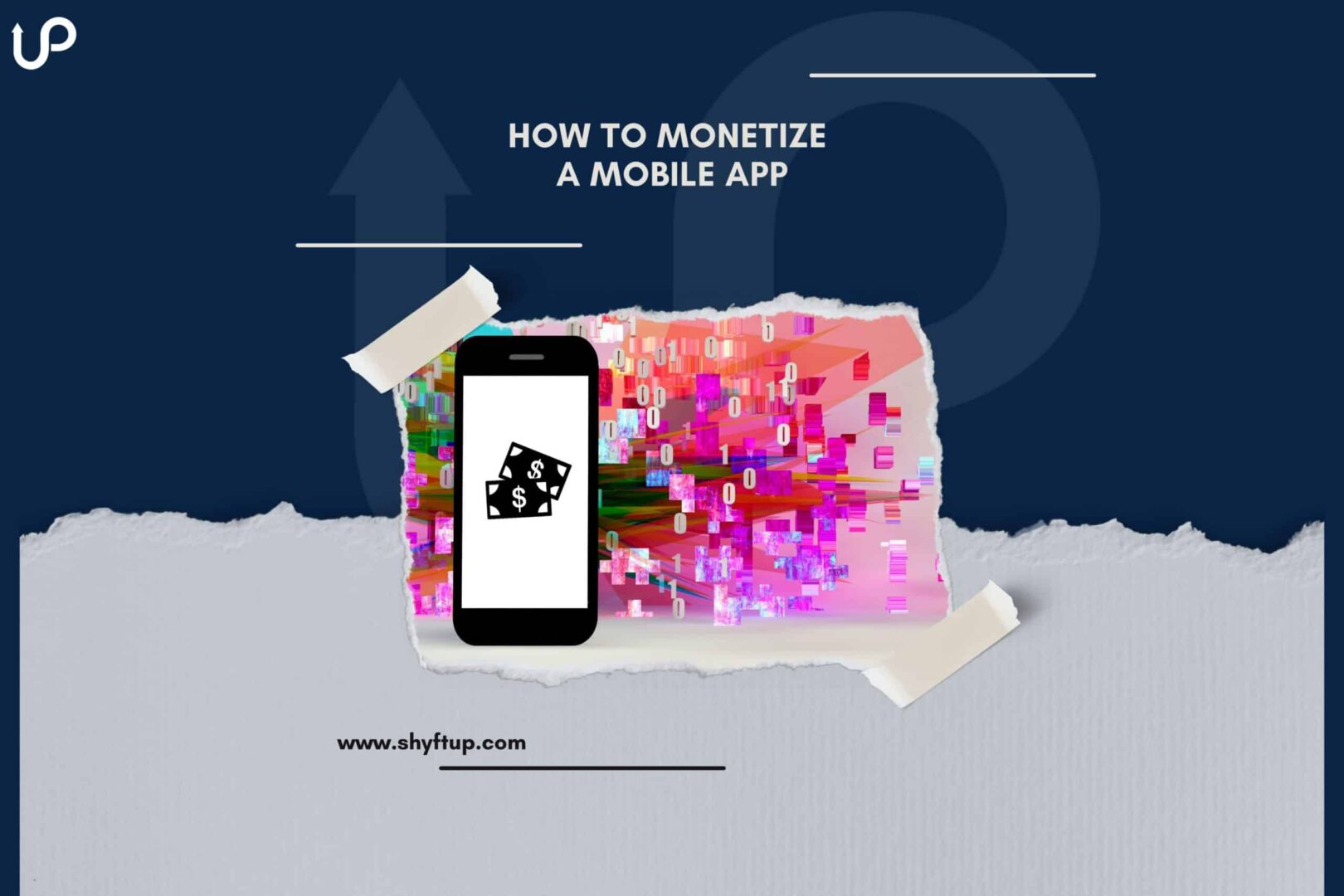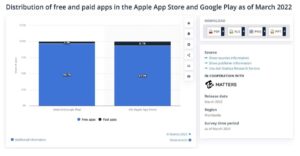
That’s a good question that deserves the right answer.
According to statistics, some of the most popular apps today earn as much as $82,500 a day. Of course, if you look at the average, a common mobile app can earn nothing to about a few hundreds of dollars on a daily basis.
With this in mind, you might be wondering, how exactly can you make money with your mobile app?
Today, you will find out. Read on to learn more!
Running ads
It’s no secret that the majority of the apps in app stores are freely available. In fact, statistics show that 96.7% of apps in Google Play and 93.9% of apps in the Apple App Store are free.
So, how do these apps make money when most of them are free? Well, the answer is simple — ads.
Running ads is the most common way to earn money using your app. It keeps your app free while you keep on earning.
There are different types of ads you can run. Here are some of them:
- Interstitials
- Native ads
- Banner ads
- Rich media
- List or panel ads
- Affiliate ads
- Reward ads
Ads are easy to set up. It keeps pouring money even while you sleep. What’s great about ads is that they help you to earn money almost instantly.
Disadvantages of running ads
Of course, as good as it sounds, there are drawbacks when you rely on ads to put money in your pocket.
For one, you need a massive amount of users to earn a meaningful amount of money. Each ad pays too little money. So, you need a lot of ad views and engagement to accumulate a larger amount of earnings.
Aside from that, ads can affect the user experience. This means that ads can potentially become annoying and distracting. If you’re not careful, users will uninstall your app due to too many ads.
How to run effective ads
You need to balance out the number of your ads and its appearance frequency. You should add enough ads to help you earn, but not too many that you chase away users.
Timing is also a key here. Don’t simply run ads whenever you want to. Instead, run ads when your users have accomplished or did something. You run ads at the beginning or end of activities so that you don’t disrupt your user.
Be sure to test your ads. What works for others might not work for you. Thus, get as much data as possible to create data-driven decisions.
Some examples of mobile apps that primarily earn from ads are social media platforms. Think of Facebook, Instagram, and Twitter. These apps are 100% free, but in exchange, you have to see a few ads.
In-app purchases
If you don’t like ads, you can use in-app purchases instead. It’s a great way to keep your app free, but at the same time, helps you earn money.
You can initially provide certain features of your app to be free. However, you can let your users get the advantage of other features once they pay for them.
For example, you can download a budgeting app. You can use the basic features, but if you want to fully use the app, you need to pay for additional features.
Another example would be gaming apps. These apps allow you to play the game, but at some point, if you want to make upgrades or unlock new stages faster, you can buy points or coins.
Sell products or offer services
If you have products or services to offer, you can definitely do that with an app. Think about online buy and sell platforms or marketplaces. Some great examples would include eBay, Amazon, Etsy, and Alibaba.
Of course, you don’t have to be a giant marketplace to use this business model. If you have a local store, you can use apps to get in touch with new and existing customers.
Aside from physical items, you can sell digital products such as eBooks, online courses, songs, videos, and so much more.
Offering services can also be a great way to earn through your app. An example would be the Thumbtack app. It’s an app that connects local professionals and their customers.
Subscription
A subscription is when you let your customers use your app for a period of time, usually a month, in exchange for payments.
One great advantage of the subscription business model is that it gives you a regular stream of income. It also kind of split the cost. This will make your mobile app more affordable.
Some of the most popular apps that use subscriptions include Spotify, YouTube Music, Netflix, Tinder, and Deezer. Subscription isn’t just limited to entertainment, but it can also be used by educational apps.
Paid apps
If you don’t like the thought of giving away your precious app for free, then you can turn your app for a paid one. Right off the bat, you can offer your app free to download but immediately ask for payment in order to proceed.
Paid apps are ideal for apps that offer rare, unique, or hard-to-find services, information or features. For example, productivity and educational apps ask for payment upfront.
Obviously, you want to have an app that gives value to the user. It should be an app that solves people’s problems or meets their needs. If not, then you will have a hard time finding paying customers since most people would rather use a free app.
Sponsorships or partnership
If you truly have a great app, you might be able to attract huge companies who would like to get featured in your app. They can serve as sponsors or partners who will be more than happy to give you money in exchange for exposure in your app.
Selling app
You can build an app from the ground app and let others buy it in the future.
Yes, that’s possible. If you’re not convinced, think about the following:
- Instagram and WhatsApp were bought by Facebook
- Waze and YouTube were bought by Google
- Vine was bought by Twitter
- Skype bought by eBay
- LinkedIn bought by Microsoft
You can create unique coding for your app. If your coding is something useful for something, a company might approach you and buy that code, which in the process, might also mean selling your app.
Just to give you an idea of how much an app can potentially cost, Facebook bought WhatsApp for $19 billion and Instagram for $1 billion. Who knows, your app would be the next big thing that other companies would like to buy.
How to run a successfully monetized mobile app
If you want to ensure you earn from your app but at the same time keep your customers, you need to focus on user experience.
You see, how your customers use your app would mean whether they will stay or not. Historically, monetizing your app can negatively affect your user experience. You need to be really careful.
That’s the reason that it is crucial that you wisely weigh when monetization is too much and when it is acceptable. People can easily see whether you are just there to simply get their money rather than providing value for them.
If you can create a wonderful app that people enjoy using, they can tolerate a few ads or sponsors appearing once in a while in the app. They won’t mind that unless your app sucks.
Imagine if your app is already riddled with bugs and then, you also add ads. That would certainly turn off users and uninstall your app.
The key here is to make sure your customers are happy. Happy customers mean more income for you. After all, it’s easier for you to turn happy customers into paying customers.
Choosing how to monetize a mobile app
Now that you know some of the best ways to monetize an app, you might wonder which one you should choose.
You have to consider the pros and cons of each option. Plus, you also need to think about how your app works, in which niche it belongs to, and why people should use it.
For example, making your gaming app absolutely a paid app might not be a good idea. There are tons of gaming apps in the app store today. People would simply look for others that are free. So, in this case, you might consider in-app purchases instead.
Please note that you don’t have to stick with only one business model. Actually, you can use one or more business models.
There are a lot of successful apps out there that use a combination of app monetization strategies. For example, they offer subscription plans and in-app purchases at the same time. Some would offer sponsorship while selling products simultaneously.
Don’t limit yourself. You can explore as many mobile app monetization strategies as possible and finally determine the right ones for you.
Learn more about monetizing your mobile app
Earning through your app is a great income stream. However, if you’re serious about your mobile app and turning it into a full-time earning machine, you need qualified help.
That’s where ShyftUp comes in.
ShyftUp specializes in designing and executing mobile app growth strategies. With powerful and effective user acquisition capabilities, ShyftUp has helped hundreds of mobile app developers and owners bring their products in front of their target audience.
Get in touch now and see how ShyftUp can help you!
The answer is it depends. Running ads is best if you want to keep your app free. However, some mobile apps thrive in charging fees for membership or premium features and content.
How much you earn depends on various factors such as your niche, how much you charge, and the number of your users. Just to give you a ballpark, top apps earn as much as $90,000 a day. However, other less popular apps can earn as much as $100 to $1,000 per day.
Gaming apps are understandably the highest-grossing apps. The US, China, and Japan are the top spenders. What is the best way to monetize a mobile app?
How much money do apps make?
What are the top-grossing apps?







